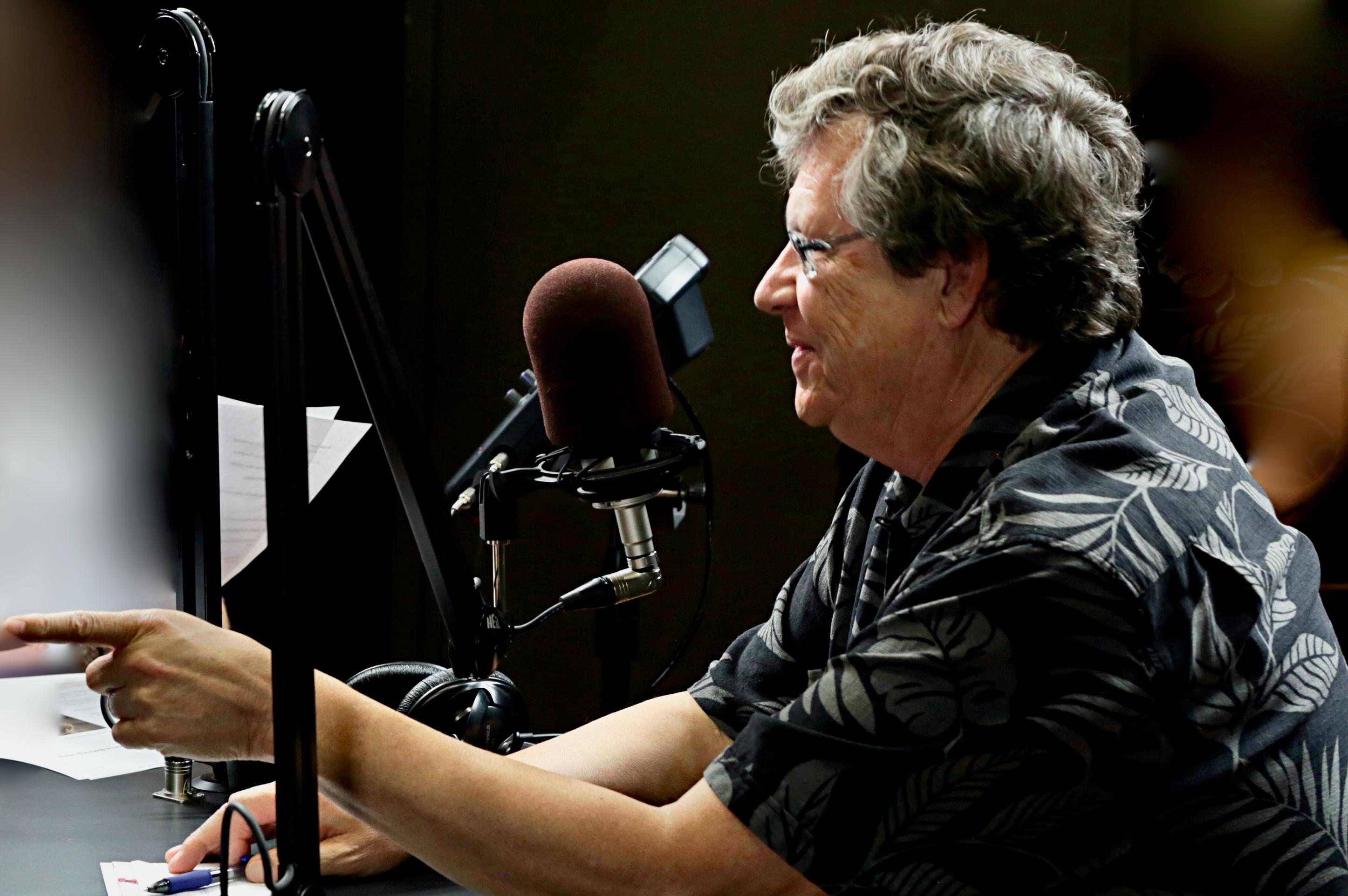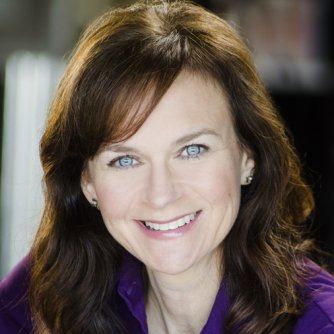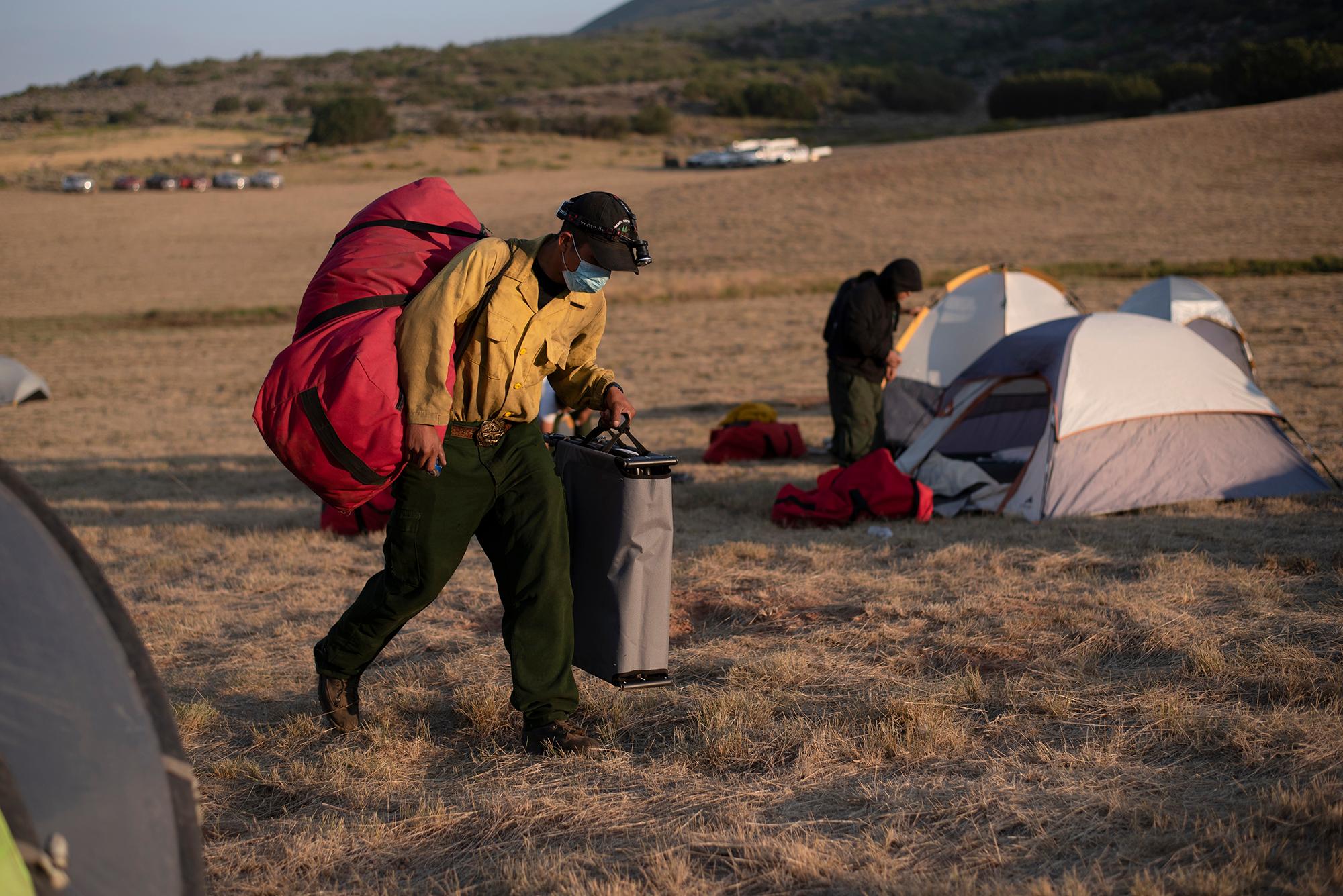
Hundreds of people have gathered to fight the Grizzly Creek fire as the blaze roars on in Glenwood Canyon.
One night last week, about 200 firefighters were staying at a temporary fire camp between Glenwood Springs and Carbondale, just about 3 miles from the flames.
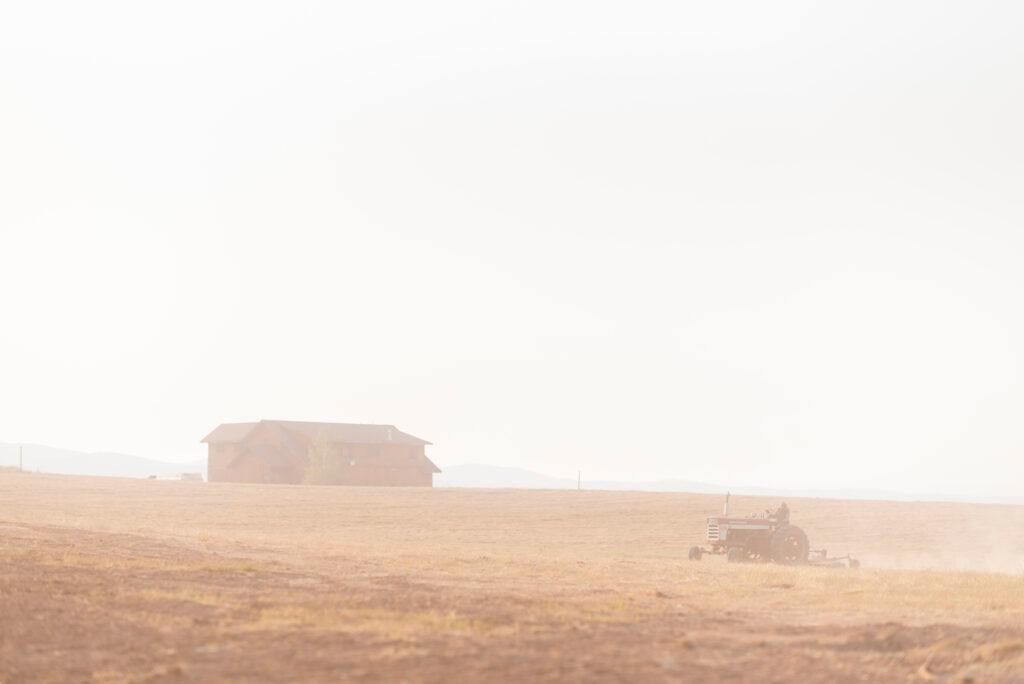
A rancher mows down the brush on the Cox family ranch in Spring Valley to help with fire mitigation efforts in response to the nearby Grizzly Creek fire.
Throughout the valley, residents have stepped up to support firefighting efforts.
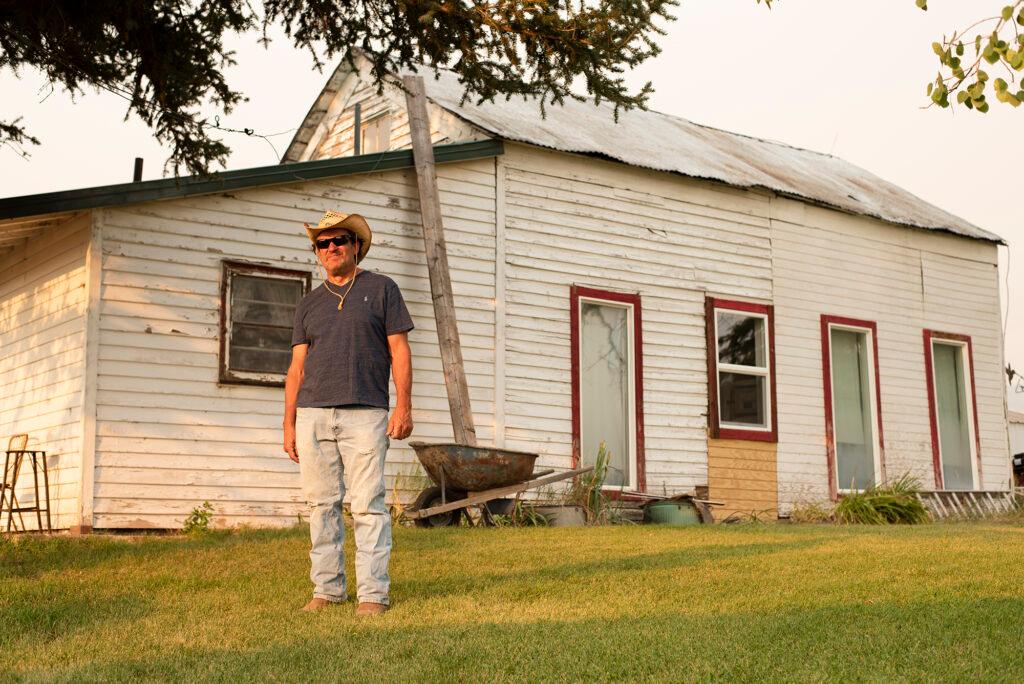
That includes Alan Cox. On July 6, he returned to his land to make some much-needed repairs on the homestead that has been in his family for four generations.
A month later, when the Grizzly Creek fire broke out and Cox received pre-evacuation orders for his historic property, he extended his stay and opened up his land for firefighters to make their base camp.
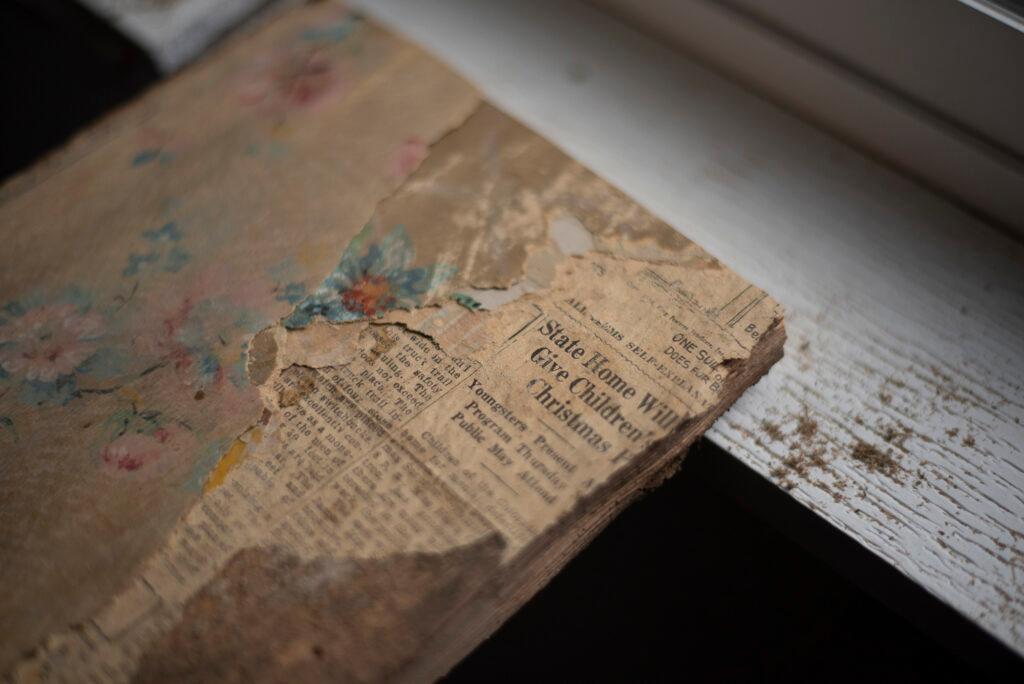
The house has over a century’s worth of wallpaper and newspaper dating back to 1893 lining the walls.
"It's unique in that you have a place to always go back to that you grew up in. Most people can't point to a place they grew up in and that their parents grew up in and that their grandparents grew up in," Cox said. "But they had a legacy of giving and always welcoming people in ... and I think they're looking down now, and they're very pleased with that legacy."
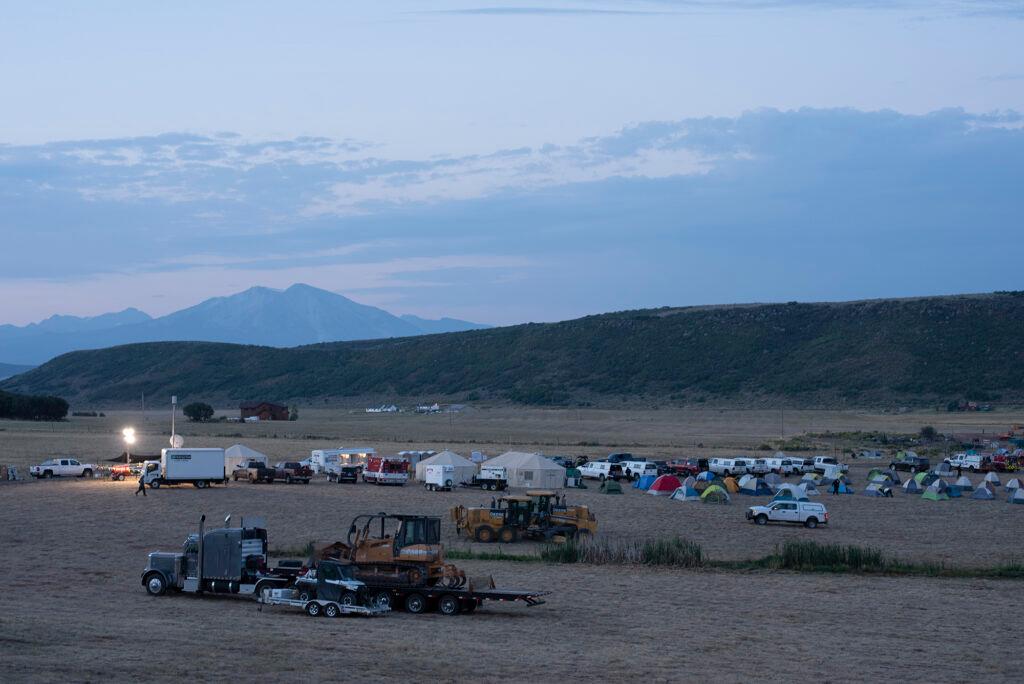
Cox’s property quickly grew into the Red Canyon Spike Camp housing approximately 200 firefighters and much of the heavy equipment used to contain the Grizzly Creek fire.
Dividing crews into smaller “spike” camps has become an essential part of their strategy to fight COVID-19.
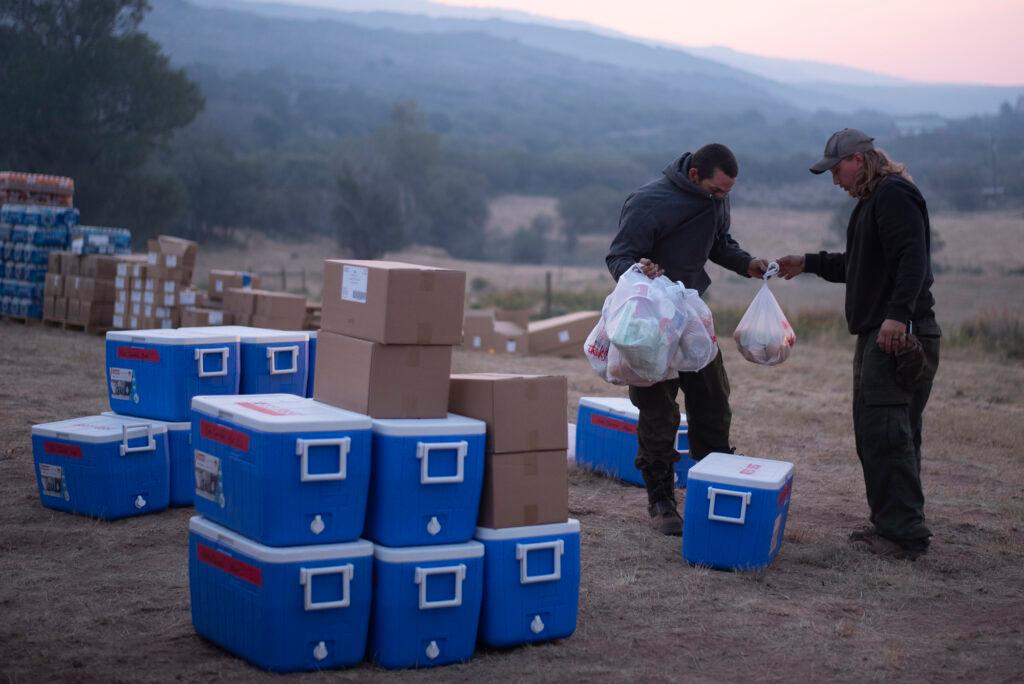
A firefighter covers his face as he picks up breakfast meals for his crew. To prevent the spread of COVID-19 meals are individually packaged into plastic bags.
Another crew member, Andrew Carillo, came in from Oregon. The terrain is one challenge — but so is the pandemic.
"It's a little different from before from we're used to fighting fires, now with the mask and stuff like that. Constantly washing our hands, constantly keeping our social distancing," Carillo said." It's hard because we're not used to being like that. We come together into vehicles and we're used to not practicing that stuff. So now we have to really, really practice that."
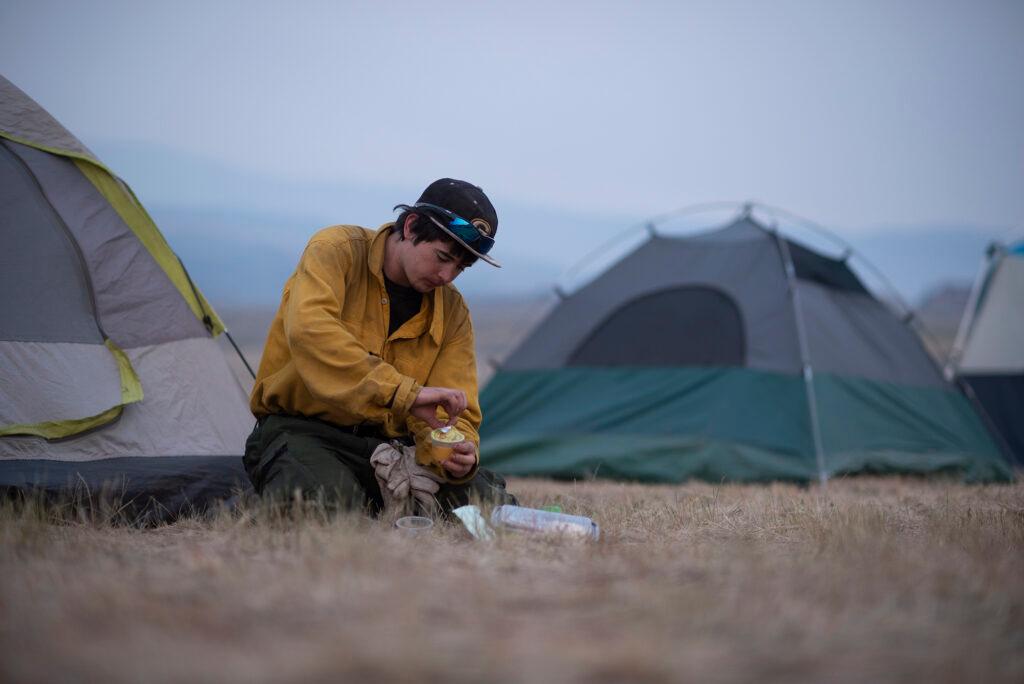
With the absence of a common dining area, a firefighter eats breakfast back at his tent.
The distance has been a loss for firefighters, including Jerry Brown, who came from Kentucky to fight the Grizzly Creek Fire. He misses the camaraderie that was possible before the pandemic.
"Generally, we go out on the line and you spend 14, 16 hours out there — or whatever your shift length is — and you come in and you sit down in a tent and you eat dinner and you talk to the guys that you held the line with, and chatting," Brown said. "It helps pass time when you're away from home. And now we come in and you go up, get in line and you get your meal, go back to a vehicle or you go off someplace by yourself and have dinner. And then lay down for the night. There's really not a conversation like there generally is."
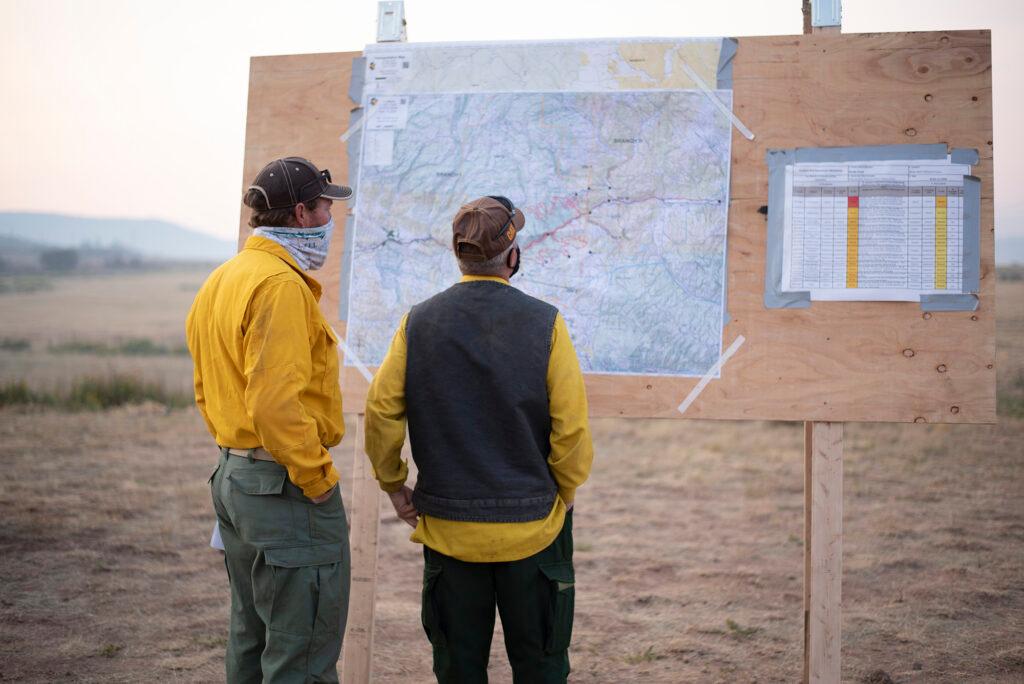
An updated map of the fire is posted each morning.
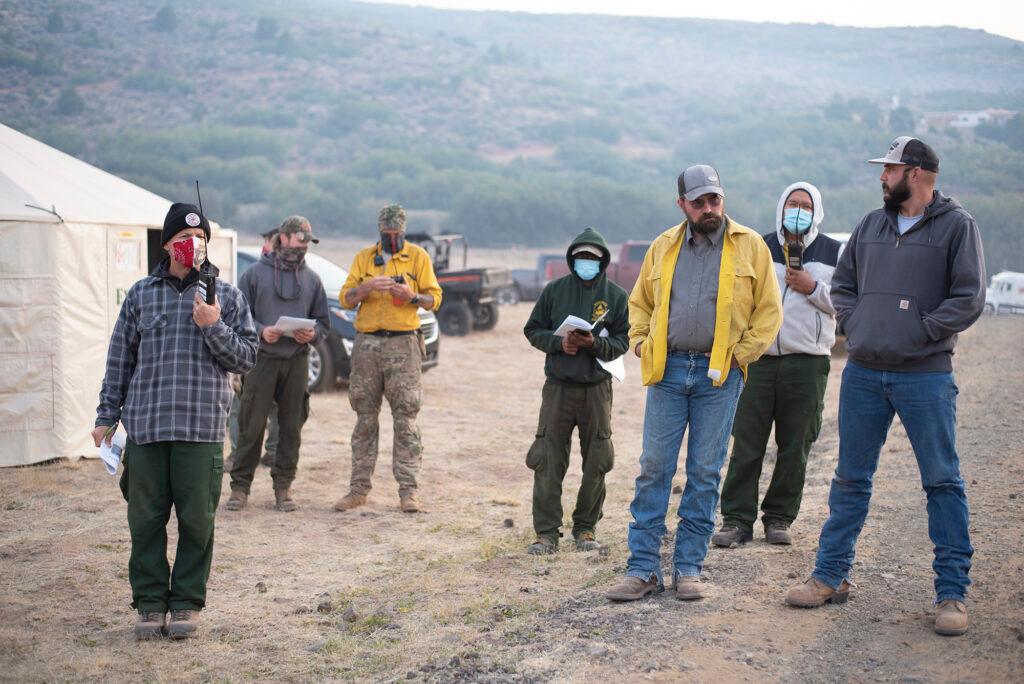
Morning briefings from incident command are broadcast over radio in order to allow for social distancing measures.
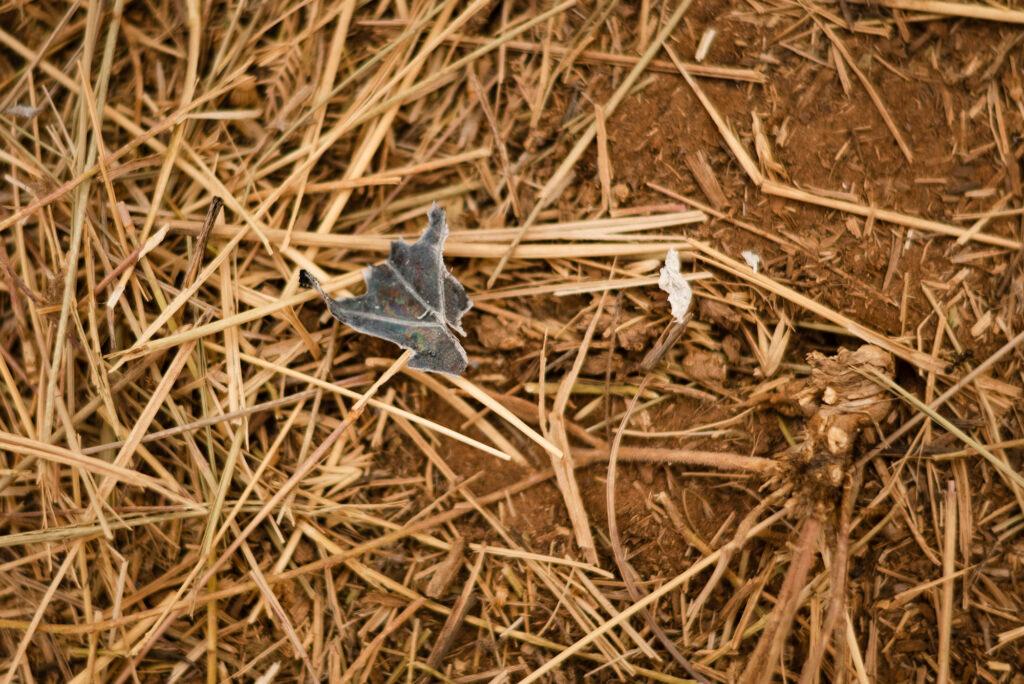
This burnt oak leaf was likely carried for at least three miles by the wind before it landed at the Red Canyon Spike Camp.
Debris like this can spark new fires and was suspected by many crew members to be the cause of the nearby Red Canyon Fire that erupted on Aug. 19. The blaze was quickly contained.
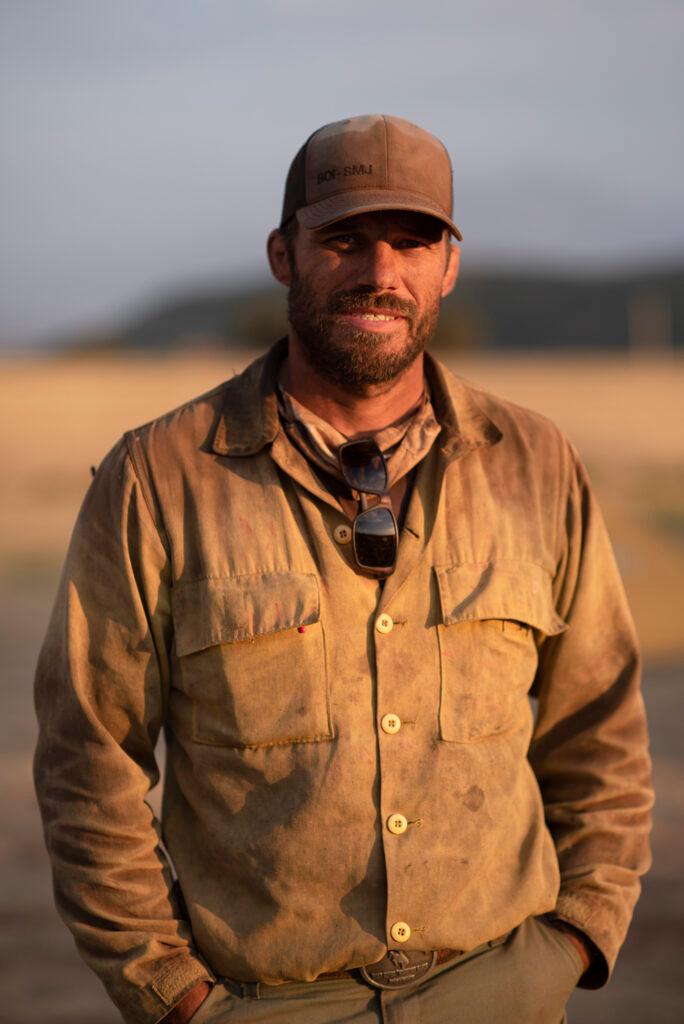
Gabe Harry, a smoke jumper from Boise, Idaho, arrived with the long view.
“This particular area has a lot of history in it over time. We have South Canyon right down the road. Several firefighters died in that," Harry said. "And over the years this area, Glenwood Canyon has proven to be very difficult to fight fires in. And very difficult to get logistical support, to fight those fires in, just because of the terrain and the fuel type that we're trying to fight these fires in.”
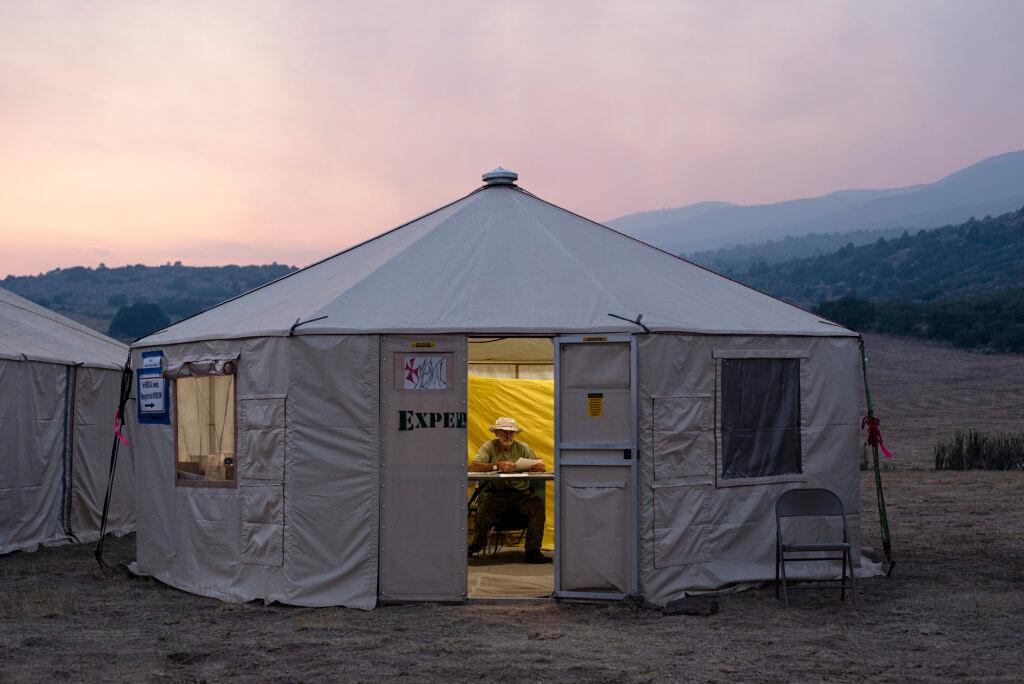
Medical Supervisor E.T. Collinsworth prepares reports detailing supplies going in and out and treatment administered on Aug. 16.
In addition to heat and altitude-related illnesses, Collinsworth is seeing a lot of knee and ankle injuries due to the extreme terrain.
Tom Coletti, who traveled from the Florida Forest Service, said those conditions can add up.
"We tend to get a lot of heat exhaustion and heat emergencies," Coletti said. "Even though our people are in great physical condition, it just gets to them over the long hours, 16-hour days, breathing smoke, breathing dust in the heat and the humidity. It just wears people down."
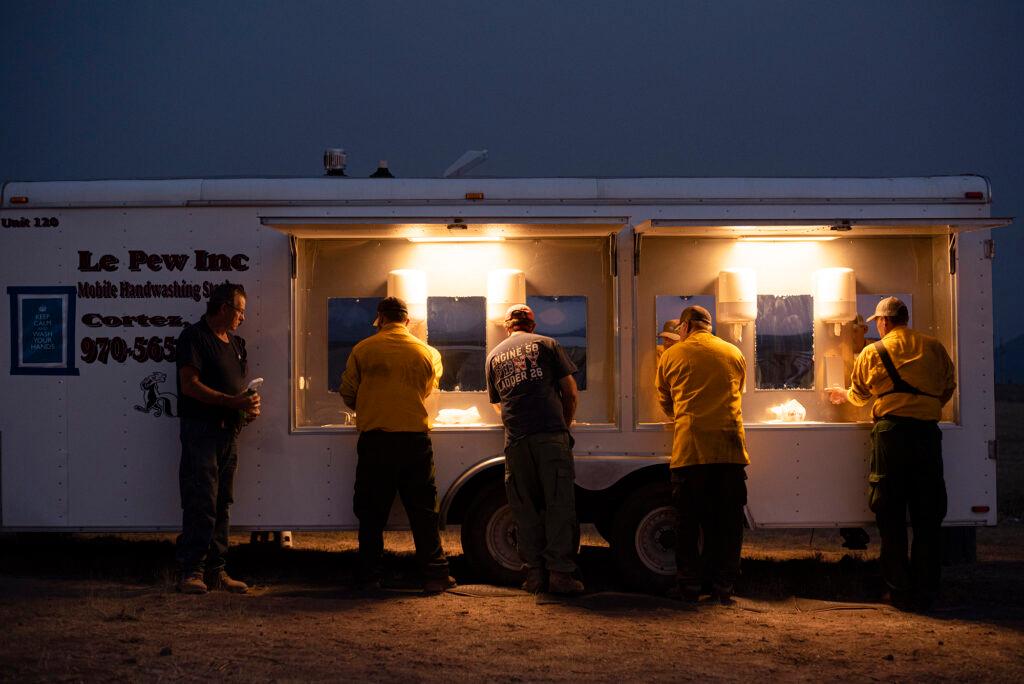
Every other sink at the handwashing station is blocked off to promote social distancing.
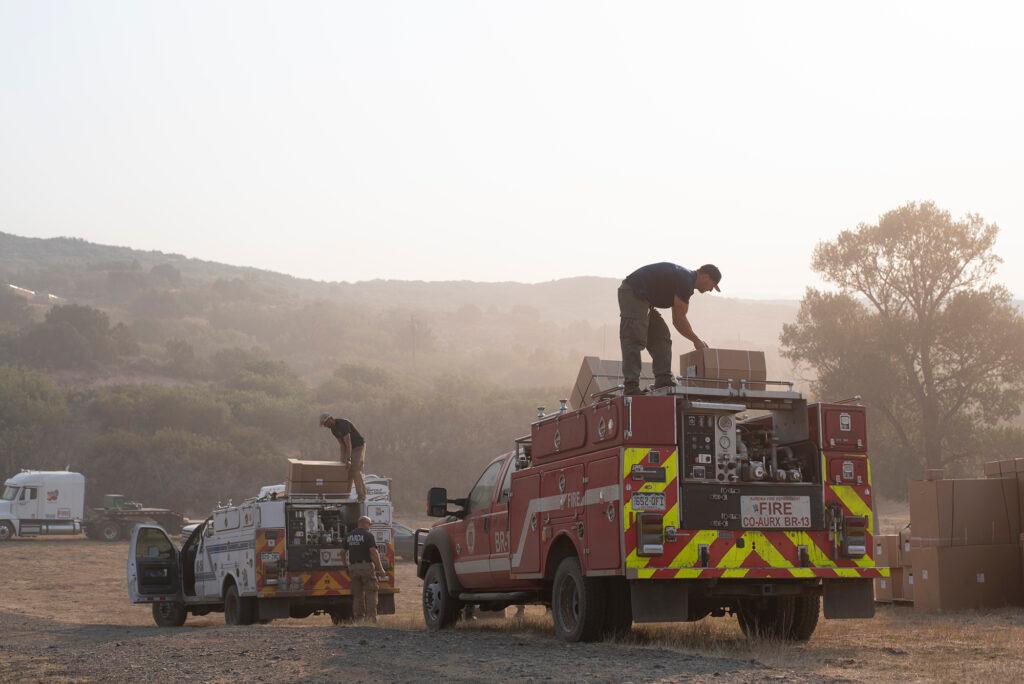
The Red Canyon Camp has become a valuable staging area to make sure supplies get out to the areas that need them.
Gratitude from local residents has helped fuel the crews, firefighter Tom Coletti said.
"Community members have come visit ... A person even offered to buy my lunch at one of the stores on the way over," Coletti said. "They put thank you signs all over the roads at the entrance to our camp, wave to us, talk to us, ask how they can help us and support us, and offer us everything that you could possibly imagine."


